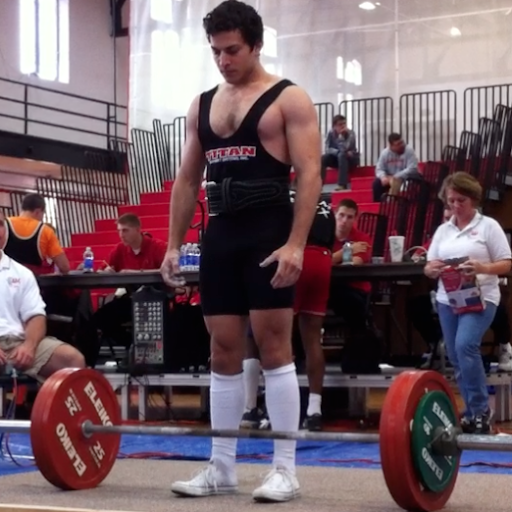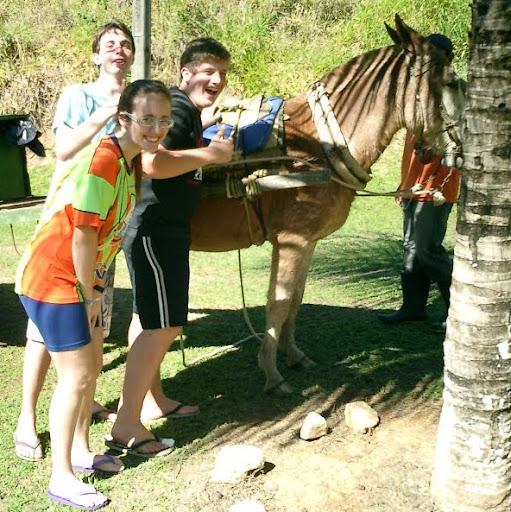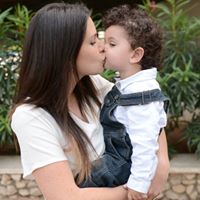Daniel G Segal
age ~38
from Fairfax, CA
- Also known as:
-
- Daniel Gravitz Segal
- Daniel S Segal
- Danny G Segal
Daniel Segal Phones & Addresses
- Fairfax, CA
- San Francisco, CA
- Seattle, WA
- Washington, DC
- Potomac, MD
- College Park, MD
- Bellevue, WA
Work
-
Company:Banyan branchFeb 2013
-
Position:Senior community manager, strategist
Education
-
School / High School:University of Maryland College ParkJan 2006
-
Specialities:B.S. in Kinesiological Science- School of Public Health
Skills
Public Relations • Social Media • Social Marketing • Media Relations • Writing • Strategic Communications • Social Media • Writing • Creative Development • Online and Traditional PR • Corporate PR • Technology • Social Marketing • Government Relations • Health Care
Specialities
Litigation
Resumes

Senior Associate Clinical Project Specialist
view sourceLocation:
San Diego, CA
Industry:
Biotechnology
Work:
Greenwich Biosciences
Senior Associate Clinical Project Specialist
Acea Biosciences Jul 1, 2016 - Feb 2017
Clinical Research Associate Ii
Gilead Sciences Aug 2011 - Jan 2016
Clinical Trial Management Associate
Amylin Pharmaceuticals May 2010 - Sep 2010
Consultant, Medical Development
The San Francisco Clinical Research Center Oct 2008 - Sep 2009
Clinical Research Coordinator
Senior Associate Clinical Project Specialist
Acea Biosciences Jul 1, 2016 - Feb 2017
Clinical Research Associate Ii
Gilead Sciences Aug 2011 - Jan 2016
Clinical Trial Management Associate
Amylin Pharmaceuticals May 2010 - Sep 2010
Consultant, Medical Development
The San Francisco Clinical Research Center Oct 2008 - Sep 2009
Clinical Research Coordinator
Education:
Keck Graduate Institute 2009 - 2011
Keck Graduate Institute 2009
University of California, Los Angeles 2004 - 2008
Bachelors, Bachelor of Science, Cognitive Science
Keck Graduate Institute 2009
University of California, Los Angeles 2004 - 2008
Bachelors, Bachelor of Science, Cognitive Science
Skills:
Pharmaceutical Industry
Biotechnology
Life Sciences
Clinical Operations
Clinical Trials
Fda
Quality Assurance
Data Analysis
Biotechnology
Life Sciences
Clinical Operations
Clinical Trials
Fda
Quality Assurance
Data Analysis

Daniel Segal
view source
Daniel Segal Seattle, WA
view sourceWork:
Banyan Branch
Feb 2013 to 2000
Senior Community Manager, Strategist Ketchum Public Relations
Washington, DC
Dec 2010 to Feb 2013
Senior Account Executive U.S. House of Representatives
Jan 2010 to Dec 2010
New Media Coordinator and Staff Assistant United States House of Representatives
Sep 2009 to Dec 2009
Congressional Intern Glaceau
May 2008 to Apr 2009
Regional Sales Intern
Feb 2013 to 2000
Senior Community Manager, Strategist Ketchum Public Relations
Washington, DC
Dec 2010 to Feb 2013
Senior Account Executive U.S. House of Representatives
Jan 2010 to Dec 2010
New Media Coordinator and Staff Assistant United States House of Representatives
Sep 2009 to Dec 2009
Congressional Intern Glaceau
May 2008 to Apr 2009
Regional Sales Intern
Education:
University of Maryland College Park
Jan 2006 to Jan 2009
B.S. in Kinesiological Science- School of Public Health United States Military Academy at West Point
Jan 2005 to Jan 2006
Cadet
Jan 2006 to Jan 2009
B.S. in Kinesiological Science- School of Public Health United States Military Academy at West Point
Jan 2005 to Jan 2006
Cadet
Skills:
Public Relations, Social Media, Social Marketing, Media Relations, Writing, Strategic Communications, Social Media, Writing, Creative Development, Online and Traditional PR, Corporate PR, Technology, Social Marketing, Government Relations, Health Care
Lawyers & Attorneys

Daniel North Segal, Bethesda MD - Lawyer
view sourceAddress:
Wmg Ste 200 7605 Arlington Rd, Bethesda, MD 20814
3016568585 (Office)
3016568585 (Office)
Licenses:
Maryland - Active 1995

Daniel North Segal - Lawyer
view sourceLicenses:
Virginia - Authorized to practice law 1994

Daniel N Segal, Bethesda MD - Lawyer
view sourceAddress:
7605 Arlington Rd Suite 200, Bethesda, MD 20814
3016568585 (Office)
3016568585 (Office)
Licenses:
Dist. of Columbia - Active 1996

Daniel Segal - Lawyer
view sourceSpecialties:
Litigation
ISLN:
1000542518
Admitted:
2003
Law School:
New York University School of Law, JD - Juris Doctor

Daniel North Segal, Bethesda MD - Lawyer
view sourceAddress:
4300 Montgomery Ave, Bethesda, MD 20814
Phone:
3017187273 (Phone), 3019078212 (Fax)
Experience:
30 years
Specialties:
Business Law
Entertainment & Sports
Entertainment & Sports
Jurisdiction:
Maryland (1995)
Memberships:
Maryland State Bar (1995)
License Records
Daniel T Segal
License #:
14524 - Expired
Category:
Electricians
Issued Date:
Jun 16, 2011
Expiration Date:
Jun 30, 2012
Type:
Electrician Apprentice
Daniel T Segal
License #:
16837 - Active
Category:
Electricians
Issued Date:
Nov 18, 2016
Expiration Date:
Jan 31, 2019
Type:
Electrician Journeyman
Isbn (Books And Publications)

Jane Austen and the Fiction of Culture: An Essay on the Narration of Social Realities
view sourceAuthor
Daniel Alan Segal
ISBN #
0816511713

Unwrapping The Sacred Bundle: Reflections On The Disciplining Of Anthropology
view sourceAuthor
Daniel Alan Segal
ISBN #
0822334623

Unwrapping The Sacred Bundle: Reflections On The Disciplining Of Anthropology
view sourceAuthor
Daniel Alan Segal
ISBN #
0822334747

Jane Austen and the Fiction of Culture: An Essay on the Narration of Social Realities
view sourceAuthor
Daniel Alan Segal
ISBN #
0847690482




Name / Title
Company / Classification
Phones & Addresses
Contract
Bolinwood Condominiums
Condos
Condos
500 Umstead Dr, Att: Office, Chapel Hill, NC 27516-1651
9199427806, 9199420009
9199427806, 9199420009
Partner
Handy Tax
HandyTax
Taxes - Consultants & Representatives
HandyTax
Taxes - Consultants & Representatives
158 - 34 Eglinton Ave W, Toronto, ON M4R 2H6
8883431155, 9053782908
8883431155, 9053782908
Us Patents
-
Method And System For Detecting And Quantifying Chemical Species In A Sample Using Animal Detection
view source -
US Patent:20210059593, Mar 4, 2021
-
Filed:Aug 29, 2019
-
Appl. No.:16/555830
-
Inventors:- San Ramon CA, US
Daniel Concannon SEGAL - Oakland CA, US -
International Classification:A61B 5/00
A01K 15/02
G01N 1/28 -
Abstract:Disclosed are systems and methods for detecting and quantifying chemicals in a sample using an animal having been trained to detect the chemical. A lower detection limit at which the animal can detect the chemical is determine. The animal is enclosed in a chamber, and air is introduced to the chamber in a series of tests having a different ratio of filtered air not having contacted the sample to air from the sample at increasing concentrations of the chemical until the animal detects the chemical. Then the concentration of the chemical in the sample is approximated by dividing the lower detection limit at which the non-human animal detects the chemical species by a ratio of a volume of air in contact with the sample to a total volume of air entering the chamber at which the non-human animal detects the chemical.
Myspace
Youtube
Plaxo

Daniel J. Segal
view sourceCincinnati, OhioPhotographer & Videographer

Daniel Segal
view sourceIndianapolis, IN

Daniel Segal Braun
view sourceClassmates

Daniel Segal
view sourceSchools:
Cabin John Middle School Potomac MD 1999-2001
Community:
Cynthia Martin, Karen Morgan, Howard Rosenfeld, John Gustafson

Daniel Segal
view sourceSchools:
Dwight High School New York NY 1974-1978
Community:
Jon Landers, Dottie Lipman, Michael Poletti

Daniel Segal
view sourceSchools:
Earl L. Vandermeulen High School Port Jefferson NY 1990-1994, State Univerisity at Albany Albany NY 1994-1998
Community:
Bo Tuncer, Joyce Chou, Huihong Song, Michelle Dasilva, Shea Johnson, Monte Chan, Sheniqua Kelly, Anna Young, Liza Ortiz

Daniel Segal, Viewmont Hi...
view source
Dwight High School, New y...
view sourceGraduates:
Daniel Segal (1974-1978),
Moises Gamio (1992-1996),
Richard Gaskin (1958-1962),
Hosseinali Moazami (1984-1988),
Davina Davina Coard (1994-1998)
Moises Gamio (1992-1996),
Richard Gaskin (1958-1962),
Hosseinali Moazami (1984-1988),
Davina Davina Coard (1994-1998)

Cabin John Middle School,...
view sourceGraduates:
Daniel Segovia (1982-1986),
Daniel Segal (1999-2001)
Daniel Segal (1999-2001)

State Univerisity at Alb...
view sourceGraduates:
Seth Siegel (1974-1978),
Daniel Kiviat (1971-1975),
Daniel Segal (1994-1998),
Patricia Boyce (1974-1978)
Daniel Kiviat (1971-1975),
Daniel Segal (1994-1998),
Patricia Boyce (1974-1978)
Googleplus

Daniel Segal

Daniel Segal

Daniel Segal

Daniel Segal

Daniel Segal

Daniel Segal

Daniel Segal

Daniel Segal

Daniel Segal
view sourceDaniel Segal

Daniel Segal
view source
Daniel Segal
view source
Daniel Segal
view source
Daniel Segal
view source
Daniel Segal
view source
Daniel Segal
view source
Daniel Segal
view sourceGet Report for Daniel G Segal from Fairfax, CA, age ~38










